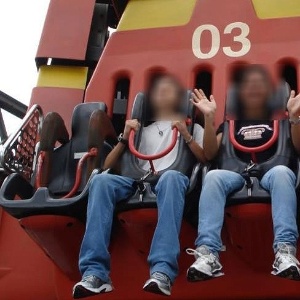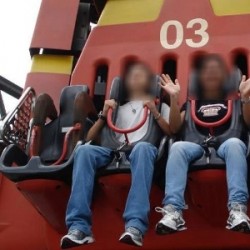
 After travelling through the United States and not missing an opportunity to jump on any rollercoaster I could find this recent tragedy hit me as a safety professional and a rollercoaster enthusiast.
After travelling through the United States and not missing an opportunity to jump on any rollercoaster I could find this recent tragedy hit me as a safety professional and a rollercoaster enthusiast.
February 24 2012, at Hopi Hari theme park in São Paulo, Brazil, a 14-year-old girl was killed after falling 80-90 feet from a drop tower named “La Tour Eiffel.”
“La Tour Eiffel” features cars which are hoisted to the top of a 224-foot tall tower and then dropped 129 feet, reaching speeds of near 95km per hour. The cars are floorless, open-air cabins, and allow the riders legs to dangle beneath them throughout the ride. Electromagnetic brakes bring the cars to a gradual stop at the base of the tower.
For those of you from Queensland or have ever spent sometime at Dreamworld, picture the ‘Giant Drop’ which stands at roughly 390 feet high and drops riders at 135kph. Built by Intamin, the same company who built “La Tour Eiffel”.
According to early reports from witnesses, the girl fell forward as the car was in free fall, landing face down on the pavement at the base of the tower. She died as she was being rushed to a local hospital as a result of her injuries.
On the 4th of March Park Officials reported that the victims seat should not have been occupied because it did not have a functioning restraint system. The seat was not used, along with at least one other seat on a different car because it was possible that taller riders sitting in these outer seats could ‘bump their feet onto the decorative metal structure surrounding the bottom portion of the ride’, the seat had been out of service for ten years.
 A statement from Hopi Hari faulted maintenance workers for failing to designate the seat as being out of service on the day of the accident. They also acknowledged that each riders restrains should have been checked manually by ride operators.
A statement from Hopi Hari faulted maintenance workers for failing to designate the seat as being out of service on the day of the accident. They also acknowledged that each riders restrains should have been checked manually by ride operators.
In 2002, the ride’s manufacturer called for the installation of seat belts on all of its drop tower models as a backup restrain device. The seat belts were designed to connect the shoulder harness to the seat at a point between the riders legs. The belt was never installed onto the victims seat, because the seat was not in service in 2002, and park officials intended that the seat would never be used.
Unfortunately officials at Hopi Hari were very quick to place blame on the individuals, the maintenance workers and ride attendants, rather than accepting that their systems were inadequate and led to the death of an innocent girl. Looking at the controls applied, Hopi Hari believed that placing the seat ‘out of service’ and instructing operators not to use it was enough to control the risk, simple engineering of the seat to lock it closed or remove the harness completely to prevent it ever being used would have prevented this incident occurring.
No Responses